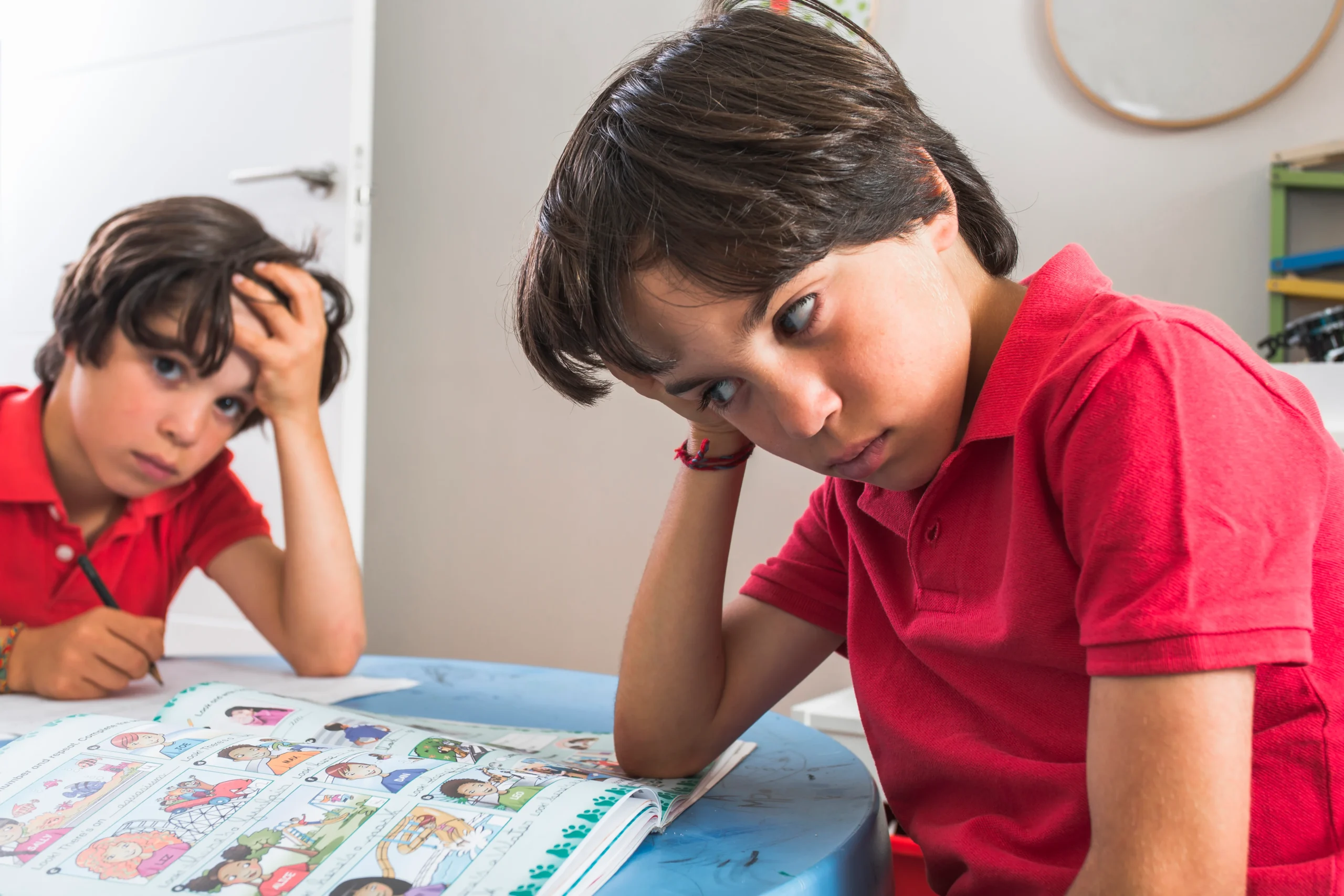You realize that your two-year-old child does not react when you call their name. Your child returns home every day frustrated, unable to grasp the crayons as other kids do in school. These are not temporary stages but possible precursors of developmental disabilities, lifelong neurological disorders that impact 17% of children.
However, all parents and educators should understand that neuroscience teaches us that early intervention can help rewire the brain. How we intervene during those crucial early years can significantly alter life paths. With practical advice supported by evidence, this guide about developmentally disabled kids provides a roadmap to making potential a reality at every age and stage.

What is a developmental disability? It is clinically determined to be a serious impairment that happens under the age of 22 and is an impairment that seriously limits major life activities: learning, mobility, communication, self-care, or independent living. These disabilities contrast with temporary delays and differ permanently in terms of brain development or physical performance, establishing patterns of lifelong difficulty and impairment.
The earlier that signs are recognized, the better outcomes change. Failure to meet several milestones, such as the absence of babbling by age 1 year, the absence of pointing by age 2 years, or the absence of pretend play by age 3 years, are indications that trigger immediate developmental screening. Validated scales for autism risk or adaptive behavior, such as the M-CHAT-R and Vineland-3, are administered by pediatricians. A critical step of action: Take them and download the free CDC Milestone Tracker app now, and document your observations regularly.
Is autism a developmental disability? Unquestionably. The autism spectrum disorder (ASD) is a unique neurobiological variation in which 1out of every 36 children are affected. Advanced neuroimaging reveals abnormalities in connectivity, particularly in the social brain system (STS) and regions involved in sensory processing.
This change in neurology presents essential difficulties: an inability to respond to facial expressions, physical contact repulsion, language perception as objectively as possible, as well as being sensitive to sound, such as fluorescent lights, which can be likened to the sound of chains being chopped, and labels in clothes may be likened to sandpaper.
The studies have found that visual supports cut the number of meltdowns in the classroom by 60%. When a toddler no longer shares happy moments with their parents by making eye contact or cuddling, but instead stays in stubborn resistance.


Learning disorders are part of developmental disabilities and are disorders of brain processing (normal intelligence) that adversely affect the acquisition of academic skills. These are not a lack of effort; however, dyslexia can create a perception of letters swirling on a page, and dyscalculia turns numbers into groups of useless shapes. These are shown to stem from atypical connections in left-sided language networks or quantity processing of the parietal lobes in contemporary neuroscience research.

Learning dysfunction is a general term used to characterize academic difficulties of various origins, including anxiety, absenteeism, or teaching deficiencies. The opposite is a clinically diagnosed learning disability learning difficulty that mirrors neurobiological breakdowns: dysgraphia entails motor planning failures so that writing by hand becomes excruciatingly slow. Auditory processing disorder can cause classroom instructions to be rearranged into unintelligible tones, even in individuals with normal hearing.

Clinicians use this classification to describe a heavy degree of educational impairment that cannot be categorized, yet nonetheless, it destroys functioning. Evidence-based treatment remains the solution – evidence-based phonics or multi-sensory math methods are frequently the key to turning things around, whether or not high-carbohydrate diets are involved.

The teaching process of independent living skills developmental disability to a person with a developmental disability requires the breaking down of tasks. Start with laundry: Disassemble into steps (1) Other samples (sort colors into marked baskets): (2) Measuring detergent done with a cup marked at appropriate measurements (3) Choosing a cycle easy to do by picture match controls. The real-world reality is that developmental disability does not mean there are no solutions; only that we solve problems differently.

Is ADHD a developmental disability? Absolutely. NIH studies, including landmark studies, confirm the maturity of the cortex in brains with ADHD, particularly in the prefrontal cortex, which is responsible for executive functions. Such neurological delay is pegged at 2-3 years, and that is the reason why your child with an intellectual gift can not remember a single piece of homework or blurt out the answers despite his knowledge.
The functional effects put it in the loop of developmental disability even within the ADA due to longitudinal studies indicating untreated ADHD results in a three times greater risk of dropping out of high school and elevating underemployment due to adult status in the same cases of untreated patients.
Medication and behavioral interventions have the best results combined. Break homework into 10-minute targeted times with 5-minute breaks. Utilize visual timers, such as the Bored Time Timer, which displays the passage of time as either elapsed or remaining time inside a shrinkable red disk, creating a tactile sense of time.
Global developmental disability diagnosis is used to describe children under five years old who exhibit significant shortcomings in two or more developmental areas, including gross and fine motor, speech-language, cognitive, or social-emotional functions. It is an emergent clinical red flag, not a final diagnosis – Longitudinal studies in Developmental Medicine and Child Neurology point out that 70% of such children end up with highly diagnostic conditions such as cerebral palsy, genetic syndromes, or metabolic disorders.
Early intensive therapy is a must. A research by the NIH, found that preschoolers who received 20 or more weekly practices of coordinated speech, occupational, and physical therapy demonstrated 40% more improvement in functions than late starters.
When cases of GDD are confirmed, parents should insist upon full genetic investigations; through a chromosomal microarray analysis that identifies aberration-causing conditions such as 22q11.2 deletion syndrome.

Living with developmental disabilities is not easy, but it is also a hard process, which at the same time can bring extraordinary strengths. Modern studies reveal that, under the support and care of evidence-based practice, people reach previously unimaginable heights: adults with Down syndrome now own their businesses, non-speaking autistic communicators are publishing poetry, and those with cerebral palsy are completing marathons on adaptive machines. The revolution is about individual approaches that do not suffer from neurological roadblocks and, instead, enhance intrinsic potential.
Adjust the learning pace to accommodate the slow learner. Historical geniuses such as Einstein never uttered a word until they were four years old, and modern inventors like Richard Branson attribute their outside-the-box thinking to their dyslexia. Work on what you do well: the boy who cannot learn the multiplication tables may be good at spatial thinking or even story-telling. Teachers should apply Universal Design for Learning strategies. They propose providing text-to-speech software, graphic tools, and oral tests to ensure a level playing field without compromising the rigor of the process.
They are genetically acquired through mutations (Down syndrome), nongenetic during the prenatal period (alcohol/lead), birth trauma (loss of oxygen), and viruses, such as Zika. Developmental disabilities are associated with more than 500 genetic disorders.
Partially. Before birth, folic acid reduces the risk of injury to the neural tube by 70%. Vaccines can prevent disabilities associated with the rubella virus. By avoiding alcohol during pregnancy, fetal alcohol syndrome will be eliminated.
The various developmental disabilities fall under the learning disorders category, with the only point of learning involved being the academic skills (reading/math).
Early Intervention (0-3), school IEPs, speech and occupational therapy, Medicaid waivers related to adult housing and job support, and DDD-financed assistive technology.
Yes, 34% of persons with mild intellectual disabilities will live independently with support such as medication apps or video-call check-ins. The rest, 40%, do well in communal living with part-time caregivers.
Keep track of milestones strictly. Apply visual schedules (decrease anxiety by 58 percent). Enroll in evidence-based initiatives such as Stepping Stones Triple P, which has been shown to reduce behavioral crises by 60 percent.
Subscribe to our regular newsletter updates and stay educated!